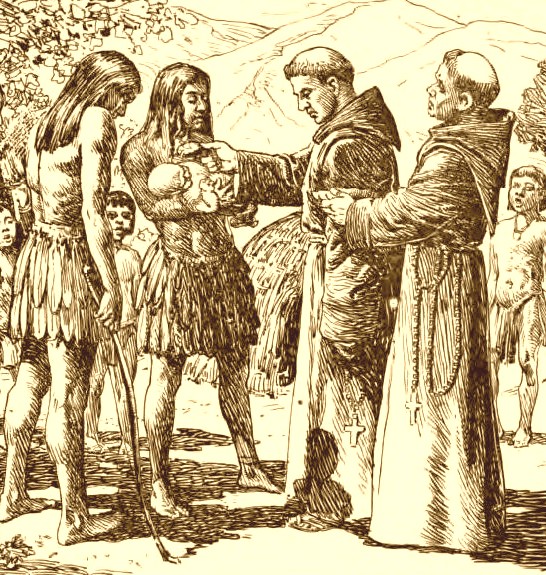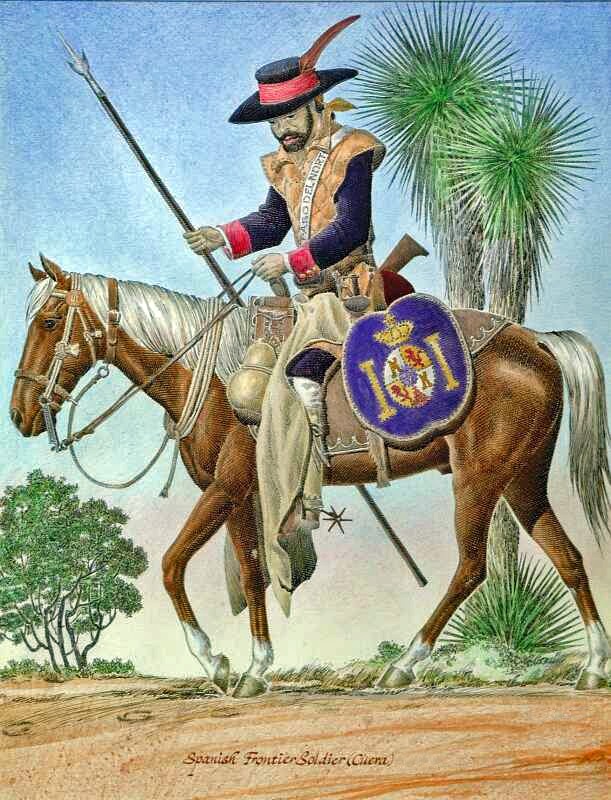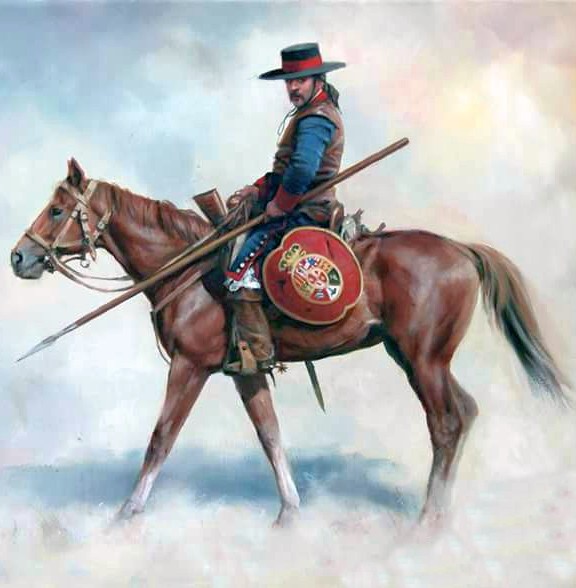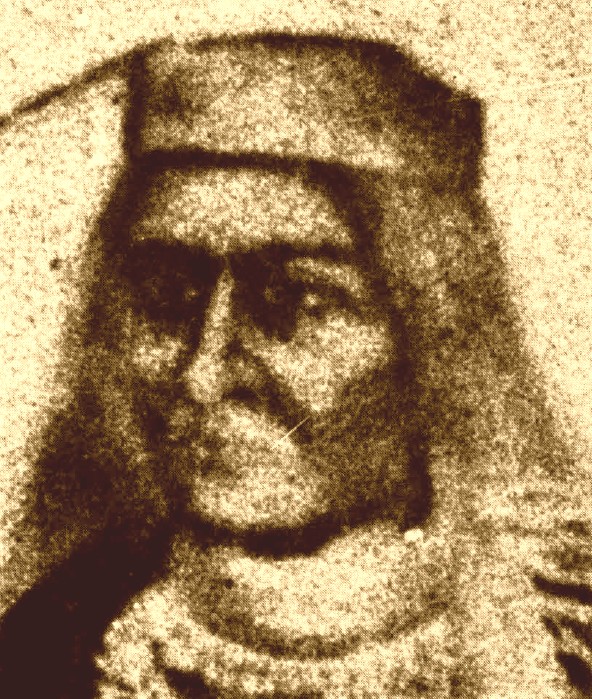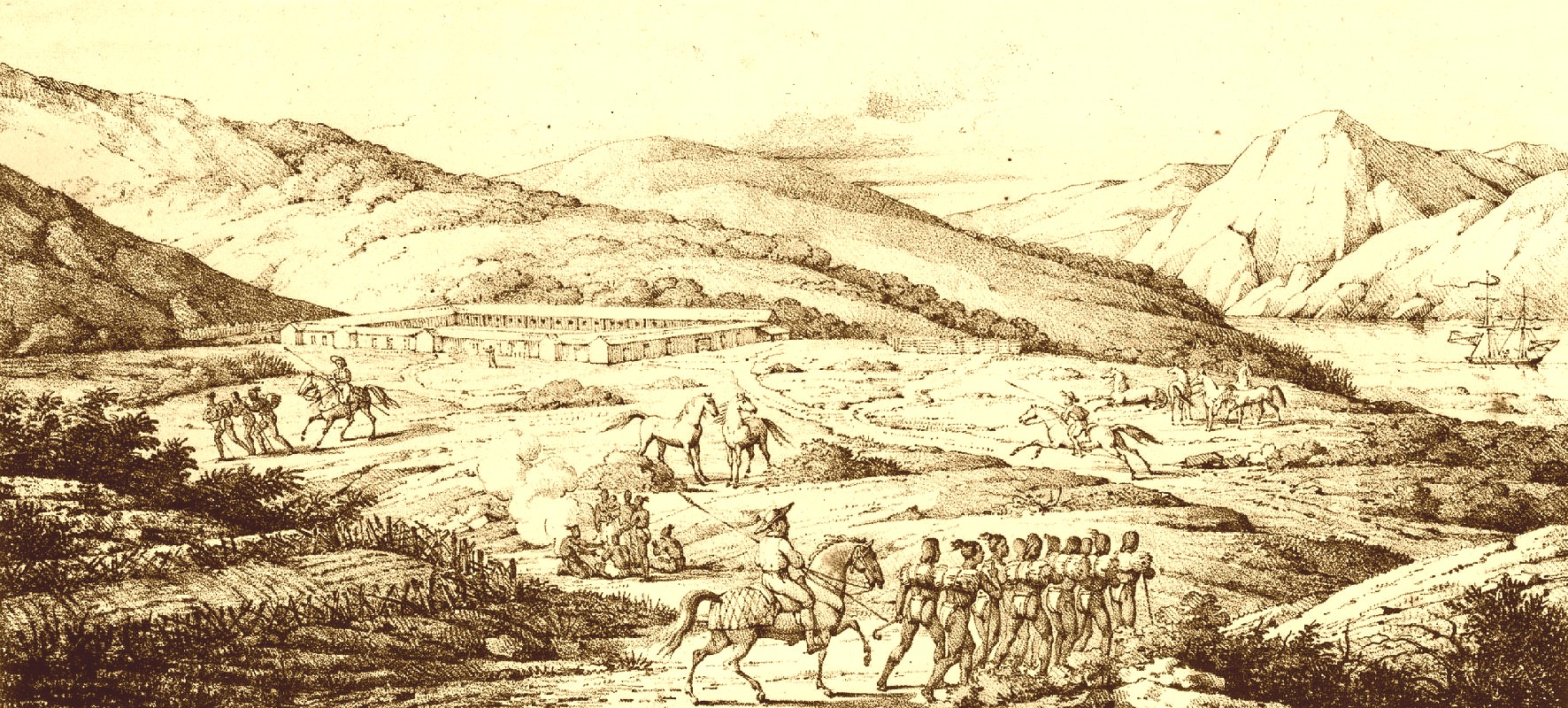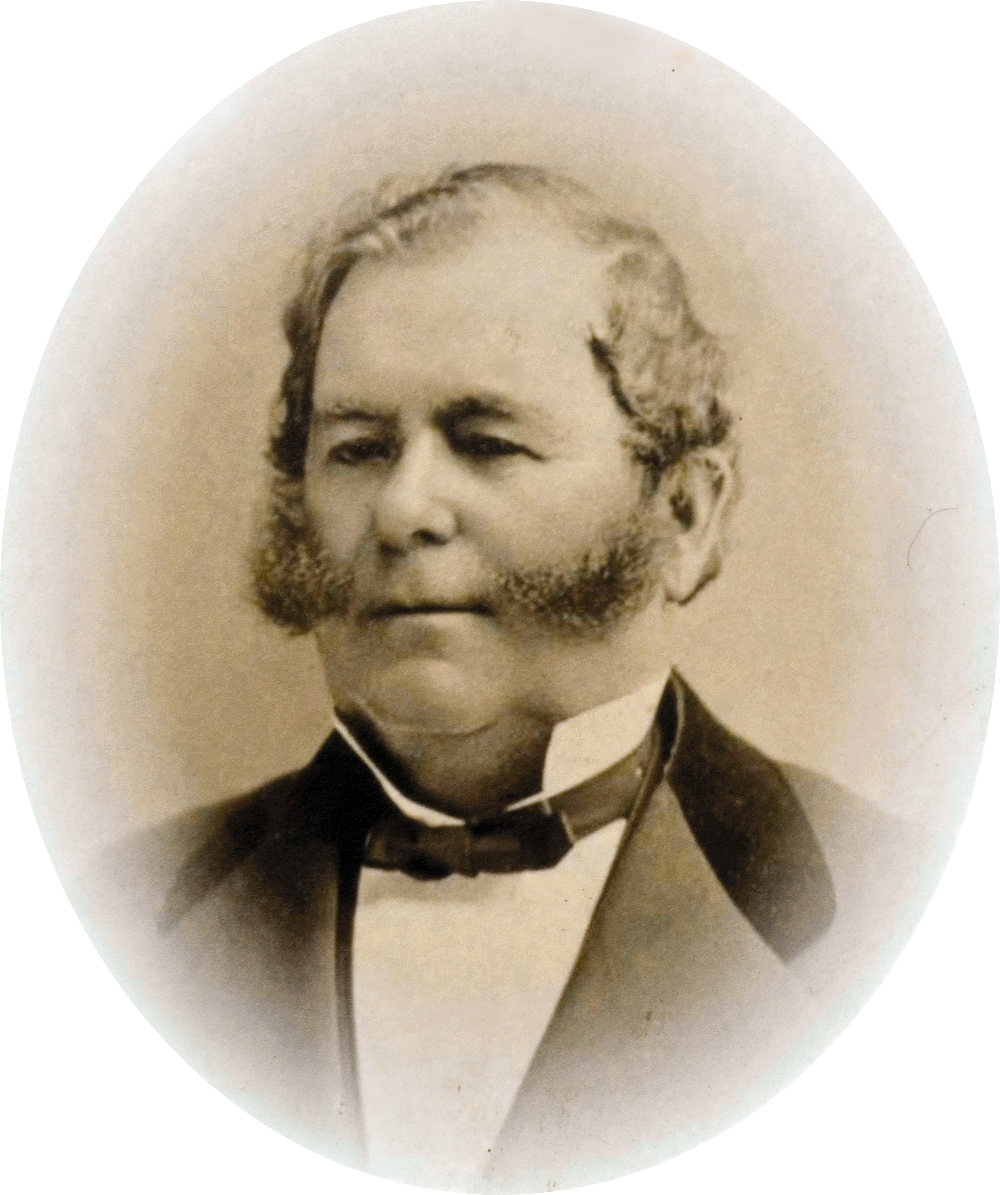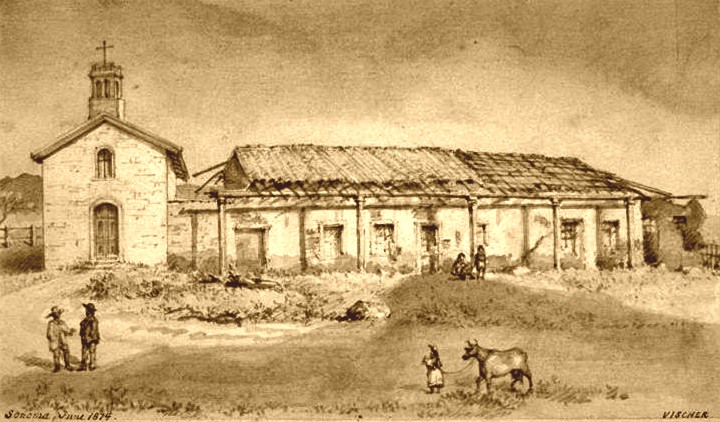|
Father Zephyrin Engelhardt (1897) writes that, "there is hardly a mission register in California that does not show his [Abella's] name. He was considered by his superiors to be one of the most zealous and able Fathers in the country for missionary work. In 1826 Fr. Abella professed obedience to the new Mexican republic, but refused to take the oath. Before leaving San Carlos he became sick and infirm; and his term of service at Sun Luis Obispo was one of illness. Fr. Jimeno in 1842 charged administrator Guerra and others with having robbed Fr. Abella, and with having treated the old Father "with the greatest ingratitude, inhumanity, and vileness " Fr. Ramon's last days were passed at [Mission] Santa Ines, where he was buried, on May 24th, 1842, in the presbytery on the epistle side, about two varas from the church wall". Notes:
Moraga then served as a private, corporal and sergeant for the next 22 years at the San Francisco and Monterey presidios, before being promoted in 1806 to the rank of alférez, which is that of a junior officer. He next led expeditions from 1806 to 1808 to explore the San Joaquin Valley, where he fought several battles against the Indians. He is considered to be the first non-native explorer to actually enter the valley, and he is credited with naming several of the major rivers there. He was also one of the first white men to enter the Suisun Valley, and his successful expedition and battle there on May 22, 1810 against the Suisun Indians was followed by his 1811 promotion by then California Governor José Arrillage to a brevet lieutenant. He was promoted again in 1817 to full lieutenant at Santa Barbara. He retired at age 55 in 1820 in Santa Barbara after 37 years service in the Spanish army, with 46 sorties against Indians, more than other Spanish soldier. Gabriel Moraga married his first wife Ana Maria Bernal (c.1770-1802) on August 2, 1784 at Mission Dolores in San Francisco (Presentacion Licencia on July 16, 1784), and they had at least 9 children before her burial on February 11, 1802 at Mission Santa Barbara. He then married his second wife Ana Joaquina Alvarado (c.1788-1863) at Mission San Gabriel, and they had at least 5 more children. He died in 1823 at the age of 58 years, and he was buried on June 15, 1823 in the Santa Barbara Mission Cemetery. Gabriel's son José Joaquin Moraga (1793-1855), with first wife Ana Bernal, was one of the grantees of the Rancho Laguna de los Palos Colorados in modern Contra Costa County. The city of Moraga, which is in Contra Costa County, is named for this son. Notes:
The younger Sanchez joined the San Francisco Presidio in 1791 as a soldier, and the orders for his appointment as a squad leader with the rank of corporal was issued on June 16, 1805 by Jose Arguello, the Captain and Commandante of the Presidio. He was then promoted on November 27, 1806 to sergeant, and he led expeditions in 1811 and 1817 that entered the Suisun Valley. Mariano Vallejo in an 1850 address to the California legislature, and in his subsequent unpublished manuscript on the history of California attributes to Sanchez an 1817 massacre of the Suisune Indians. However, the eminent historian Hubert Howe Bancroft wrote in 1885 that he suspected that Vallejo had confused the account of the 1817 expedition with an 1810 foray by Gabriel Moraga into the valley. Sanchez was promoted many years later to second lieutenant on December 23, 1826, after Mexico won its independence from Spain. He was finally promoted late in his career on October 31, 1831 to first lieutenant and assigned as commandante of Monterey Presidio, where he remained until 1836 when he retired. Sanchez married Ana Josefa Soto on September 1, 1796 at Mission Santa Clara, and they had at least 10 children. He received provisional title from Mexico in 1827 to the Rancho Burl Buri in modern San Mateo County, and he completed the necessary requirements in 1835 to gain full title. He died on June 22, 1843 at the age of 68, and was buried on July 5, 1843 at the Misison Dolores Cemetery in San Francisco. His rancho was subsequently divided between his children, but they were forced to sell it following the 1848 annexation of California by the United States. José and Ana Josefa's son Francisco Sanchez (1805-1862) was also the grantee in 1843 of Rancho San Pedro, where he built the Sanchez Adobe, which is now a park in Pacifica, California. He was also Commandante of the San Francisco Presidio and Alcalde (mayor) of San Francisco, and he led the failed Mexican military response to the 1846 Bear Flag Revolt whereby California briefly became an independant republic. Notes:
Solano's stature and command of Spanish led him to become the leader of the Suisune (Suysunes) people. The mission fathers at Sonoma made him the alcalde (mayor), which meant that he served there as the head Indian. However, the Mexican government in 1833 closed all of the remaining missions in California and distributed the mission lands, livestock and equipment among the mission converts. When General Mariano Vallejo met Solano in 1834 or 1835 at Sonoma, he put him in charge of ex-converts from the mission and newly captured Indians from Mexican campaigns in northern California. Vallejo writes that Solano came to command a force of some 3,000 warriors, and Solano's wife Isidora states in an interview that this force included the Topaytos, Yoloitos, Topaitas and her people the Chuructas. Vallejo forged a military alliance with Solano, and together they subjugated several northern California Indian groups, including the Wappo and Pomo of the Sonoma area. Vallejo's ally came to be known as Chief Solano, and Vallejo actually made him a captain in the Mexican army. Solano's unique status as both a Mexican soldier and citizen allowed him to apply on January 16, 1837 for a grant of four-square leagues of land (about 17,814 acres) covering part of the Suisune homeland in the Suisun Valley. Vallejo as Director of Colonization for the Northern Frontier provisionally approved this application two days later on January 18, 1837 as the Suisun Indian Rancho. Although the Suisune were free to use this land as they saw fit, they were required to make certain improvements to it to gain full ownership. These improvements were as follows,
Solano disappeared for a time after the sale, and his whereabouts during the turmoil of the Bear Flag Revolt of 1846 and the Gold Rush of 1849 are a mystery. The descendants of early Suisun Valley pioneer Samuel Martin later claimed that Solano reappeared in 1849 or 1850 in Rockville, near the site of the Suisune village where Solano was born. Weak and in poor health he became ill and died soon afterward. Martin is then said to have buried him at the base of a Buckeye tree that no longer stands, leading to endless speculation as to where Solano's final resting place actually lies. Monogamy was a Christian practice, not necessarily a Patwin one, and Solano is said to have had many wives. One was a woman of the Chiriuctos (Churuptos) band of the Patwins, who was born about 1784 near Cache Creek on the west side of the Sacramento Valley. One of historian Hubert Howe Bancroft's assistants interviewed her in 1874 at General Vallejo's home in Sonoma, and she states in her interview that Solano stole her about 1835 from her tribe to be his bride. He then forced her to be baptized a Christian, whereupon she was given the Christian name of Isidora Filomena de Solano. She goes on to say that she became Solano's favorite wife, and that she was the only one to join him in Christian marriage, though no record of that marriage survives today. She adds that, "after Solano died, I was married again to a man named Bill, a man with a small heart. I had no children by him, but by Solano I had eight; all are dead except a son named Joaquin, who works for a living and gives me a monthly allowance of $20. Vallejo allows me a house free, with ground." Notes:
Vallejo as a teenager was mentored by the Spanish Governor of California Pablo Vicente de Sola, and subsequently served as personal secretary to Sola's sucessor Luis Arguello. Mexico gained independance in 1821 from Spain, and when the newly created Republic of Mexico in 1824 recognized Alta California a separate territory, Vallejo enrolled as a cadet in the Presidio at Monterey. He was soon appointed corporal, then alférez (a junior officer). Notably, he commanded a force in 1829 that won a three-day battle against an uprising of Miwok Indians. Vallejo's successes resulted in his appointment in 1833 to Commander of the San Francisco Presidio. When the Sonoma Mission was closed that same year, Vallejo became responsible for the mission properties, resulting his becoming the founder in 1835 of the pueblo (town) of Sonoma. When Vallejo came to Sonoma in 1835 he met with and formed a military alliance with a Suisun Indian leader named Francisco Solano, who had come to be recognized by many of the Patwin people as their chief. Vallejo in his memoirs claims that Solano commanded at times three-thousand Indian warriors, who aided in several conflicts with various California Indian "tribal" groups. Vallejo subsequently became Comandante of the Fourth Military District and Director of Colonization of the Northern Frontier, which gave him highest military command in California. This was followed by a promotion on November 29, 1836 from alférez to lieutenant-colonel, and a new title as the Comandante General of Alta California. Political disputes with the Mexican government led them in 1842 to remove Vallejo from his command, and he soon came to the belief that California would be better off under control of the United States. He was neutral at the start of Mexican War, but he ultimately sided with the United States. When Mexico ceeded California in 1848 to the U.S. at the end of the war, Vallejo became an influential member of the Constitutional Convention for the new state, and he was elected in 1850 to the first session of the State Senate. Vallejo by the mid-1850s retired from politics to devote himself to writing a five-volume history of California that was never published. He also amassed a huge collection of papers pertaining to California under Mexican rule. Historian Hubert Howe Bancroft was able to gain Vallejo's confidence, and Vallejo eventually gifted his papers and manuscripts to Bancroft. Vallejo also dictated in 1874 and 1875 a long reminiscence on California history. Lastly, he convinced many of his associates from the old days to assist Bancroft in compiling from 1884 to 1890 a seven-volume history of California that is now part of the 39-volume set of "The Works of Hubert Howe Bancroft". Vallejo married Francisca Maria Felipa Benecia Carillo (1815-1891) on March 6, 1832 at the San Diego Presido, and they had a large family of 14 children. They lived well, and Vallejo during his military career acquired the Petaluma, Suscol and Suisun Indian land grants. However, his political influence failed to prevent the eventual loss and/or sale of these vast holdings following the annexation of California by the United States. The Vallejos continued to live comfortably, but the only land Mariano was able to retain was a modest home in Sonoma. He died on January 18, 1890 at Sonoma, where he is buried in the Mountain Cemetery. Mariano and Francisca's son Platon Vallejo (1841-1925) became a doctor in the town Vallejo, which is named for his father. He is said to be California's first-born physician. He personally knew his father's ally Francisco Solano and considered him a friend. The Vallejo family also permitted Solano's wife Isidora Filomena to live her final years on their land at their home in Sonoma. Platon many years later carved bas-relief portraits of Solano and Isidora, which are the only likenesses of them made by someone who actually knew them. Notes:
|

